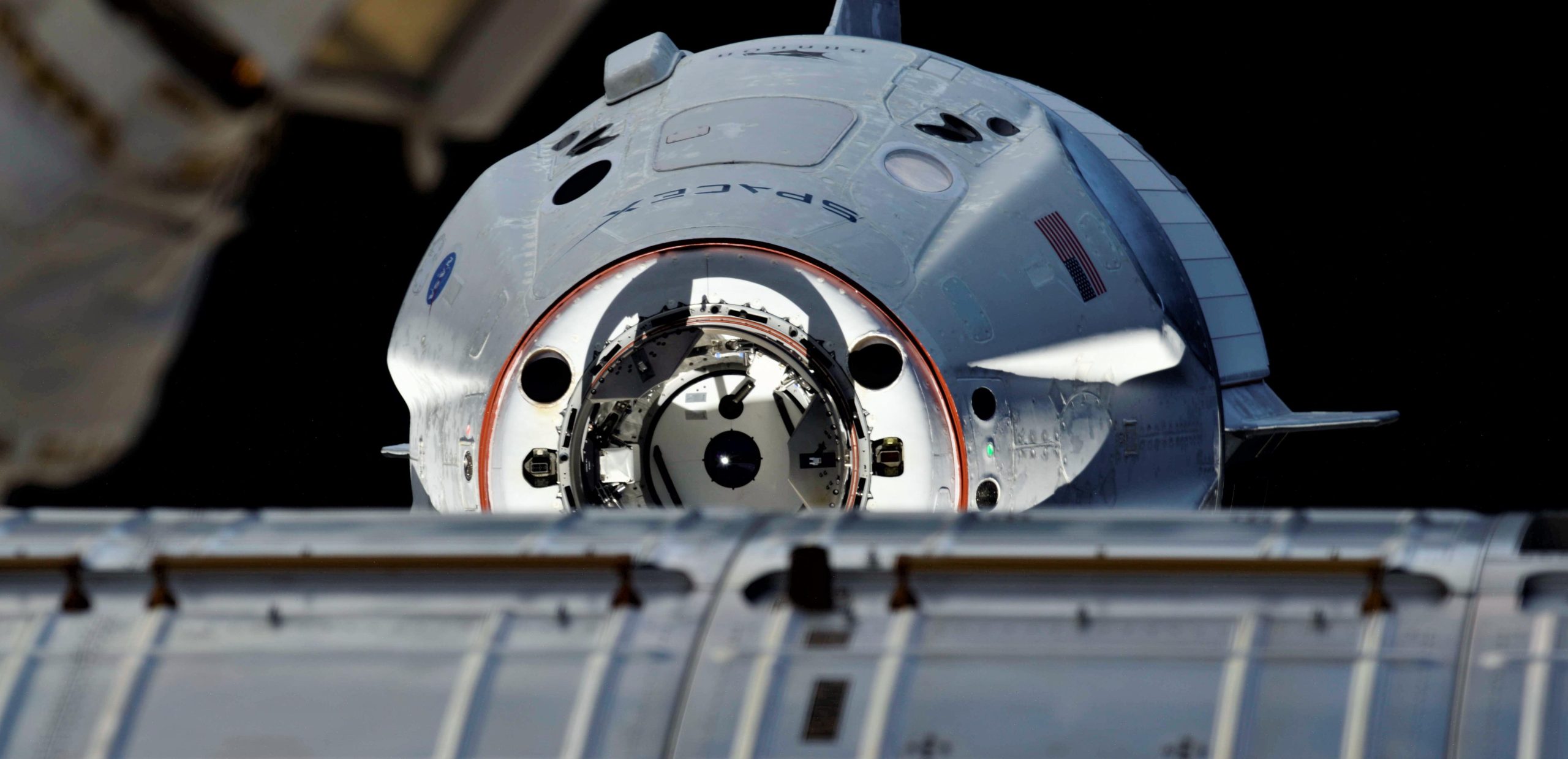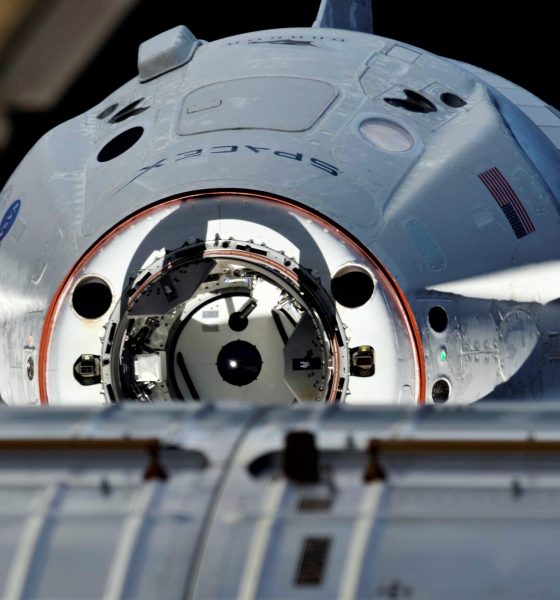

News
SpaceX’s Crew Dragon gets tentative NASA target for first astronaut launch
New information from both NASA and the US Government Accountability Office (GAO) confirm that SpaceX is currently targeting – at least very tentatively so – Crew Dragon’s first launch with astronauts aboard no earlier than November 15th, 2019.
SpaceX is currently in the midst of a complex, high-stakes anomaly investigation after its flight-proven DM-1 Crew Dragon capsule suffered a catastrophic failure on April 20th. That investigation is nowhere near full closure due to the fact that the interests of NASA and the Commercial Crew Program (CCP) are equally interwoven into the work involved. Given the potential consequences of a similar failure occurring with astronauts (public or private) aboard, NASA is unlikely to accept anything less than a no-stone-left-unturned analysis and failure resolution, including any necessary design changes to Crew Dragon, no matter how far-reaching.
As NASASpaceflight.com’s Chris Gerbhardt notes, the Crew Dragon-related dates included in the NASA Flight Planning Integration Panel (FPIP) document are extremely tentative. They’re really only there to serve as placeholders for longer-term International Space Station planning, already a necessarily uncertain endeavor. Nevertheless, NASA’s NET November 15th 2019 planning date for Crew Dragon DM-2 (the first crewed test flight) was likely okayed by SpaceX – if not provided outright by the company – before going into an official FPIP.
In other words, November 15th is probably a real target but should be treated as an absolutely-positively-no-earlier-than launch date for Crew Dragon’s first astronaut-laden mission to the ISS. Back in late March (after DM-1’s successfully completion but before the capsule’s ground failure), anonymous Russian space industry sources confirmed that NASA’s DM-2 planning date was July 25th, while also indicating that the space agency was already preparing for delays that could push DM-2 as late as November 2019.
Specifically, an anonymous Roscosmos source told Russian outlet TASS that “the [DM-2] launch of Crew Dragon is likely to be postponed to November”. Given that that delay was rumored – albeit quasi-officially – and reported on nearly a month before Crew Dragon capsule C201 catastrophically exploded during testing, it doesn’t exactly inspire confidence in a November 2019 DM-2 planning date officially released by NASA more three months later.
Crew Dragon stumbles, but optimism remains
As is often said, things were going perfectly up to the point that they weren’t. Despite 2-3 months of NASA paperwork and review-related delays, SpaceX’s first flightworthy Crew Dragon performed flawlessly during orbital rendezvous, docking, departure, and reentry to the extent that NASA and SpaceX officials were joking on-webcast about their partial disbelief. NASA’s lengthy post-mission review effectively concluded as much, although there is always room for improvement.
Due to those aforementioned DM-1 delays (roughly early January to early March), DM-2’s Crew Dragon assembly and integration was delayed in turn to preserve access in case DM-1 revealed flaws or necessary changes. Things didn’t quite go as planned, but the delayed integration has turned out to be beneficial, preserving access to most of Dragon 2’s critical subsystems without requiring major disassembly before any anomaly-related changes are implemented.

Per a late-May update from CCP manager Kathy Lueders, SpaceX has effectively shifted its Crew Dragon hardware assignments over one to account for the loss of the DM-1 capsule, C201. The vehicle previously assigned to DM-2 has been reassigned to a critical in-flight abort (IFA) test, previously meant to use flight-proven C201. Per charts provided during Lueders’ presentation, SpaceX’s replacement DM-2 capsule (likely the capsule previously assigned to the following mission, Crew-1) is in a sort of holding pattern to allow for modifications that may be required after the DM-1 failure investigation concludes.
Per a previous December 2018 update from Lueders, SpaceX’s original DM-2 spacecraft (now assigned to IFA) was expected to be fully assembled, shipped to Pad 39A, and ready for launch by June 2019. Accounting for DM-1’s delays, that spacecraft could likely be ready for the abort test as early as July or August, which meshes with post-anomaly indications that IFA is now scheduled no earlier than fall (September 2019)

All things considered, a pragmatic analysis suggests that Crew Dragon‘s DM-2 launch will most likely happen no earlier than Q1 2020, although miracles (and nightmares) are certainly possible. For the time being, all that really matters to SpaceX is wrapping up the C201 failure investigation as quickly and accurately as possible. Only after the company has publicly announced the results of that investigation should any IFA or DM-2 launch dates be taken with anything less than a full shaker of salt.
Check out Teslarati’s Marketplace! We offer Tesla accessories, including for the Tesla Cybertruck and Tesla Model 3.

Elon Musk
Tesla’s Elon Musk gives timeframe for FSD’s release in UAE
Provided that Musk’s timeframe proves accurate, FSD would be able to start saturating the Middle East, starting with the UAE, next year.

Tesla CEO Elon Musk stated on Monday that Full Self-Driving (Supervised) could launch in the United Arab Emirates (UAE) as soon as January 2026.
Provided that Musk’s timeframe proves accurate, FSD would be able to start saturating the Middle East, starting with the UAE, next year.
Musk’s estimate
In a post on X, UAE-based political analyst Ahmed Sharif Al Amiri asked Musk when FSD would arrive in the country, quoting an earlier post where the CEO encouraged users to try out FSD for themselves. Musk responded directly to the analyst’s inquiry.
“Hopefully, next month,” Musk wrote. The exchange attracted a lot of attention, with numerous X users sharing their excitement at the idea of FSD being brought to a new country. FSD (Supervised), after all, would likely allow hands-off highway driving, urban navigation, and parking under driver oversight in traffic-heavy cities such as Dubai and Abu Dhabi.
Musk’s comments about FSD’s arrival in the UAE were posted following his visit to the Middle Eastern country. Over the weekend, images were shared online of Musk meeting with UAE Defense Minister, Deputy Prime Minister, and Dubai Crown Prince HH Sheikh Hamdan bin Mohammed. Musk also posted a supportive message about the country, posting “UAE rocks!” on X.
FSD recognition
FSD has been getting quite a lot of support from foreign media outlets. FSD (Supervised) earned high marks from Germany’s largest car magazine, Auto Bild, during a test in Berlin’s challenging urban environment. The demonstration highlighted the system’s ability to handle dense traffic, construction sites, pedestrian crossings, and narrow streets with smooth, confident decision-making.
Journalist Robin Hornig was particularly struck by FSD’s superior perception and tireless attention, stating: “Tesla FSD Supervised sees more than I do. It doesn’t get distracted and never gets tired. I like to think I’m a good driver, but I can’t match this system’s all-around vision. It’s at its best when both work together: my experience and the Tesla’s constant attention.” Only one intervention was needed when the system misread a route, showcasing its maturity while relying on vision-only sensors and over-the-air learning.
News
Tesla quietly flexes FSD’s reliability amid Waymo blackout in San Francisco
“Tesla Robotaxis were unaffected by the SF power outage,” Musk wrote in his post.

Tesla highlighted its Full Self-Driving (Supervised) system’s robustness this week by sharing dashcam footage of a vehicle in FSD navigating pitch-black San Francisco streets during the city’s widespread power outage.
While Waymo’s robotaxis stalled and caused traffic jams, Tesla’s vision-only approach kept operating seamlessly without remote intervention. Elon Musk amplified the clip, highlighting the contrast between the two systems.
Tesla FSD handles total darkness
The @Tesla_AI account posted a video from a Model Y operating on FSD during San Francisco’s blackout. As could be seen in the video, streetlights, traffic signals, and surrounding illumination were completely out, but the vehicle drove confidently and cautiously, just like a proficient human driver.
Musk reposted the clip, adding context to reports of Waymo vehicles struggling in the same conditions. “Tesla Robotaxis were unaffected by the SF power outage,” Musk wrote in his post.
Musk and the Tesla AI team’s posts highlight the idea that FSD operates a lot like any experienced human driver. Since the system does not rely on a variety of sensors and a complicated symphony of factors, vehicles could technically navigate challenging circumstances as they emerge. This definitely seemed to be the case in San Francisco.
Waymo’s blackout struggles
Waymo faced scrutiny after multiple self-driving Jaguar I-PACE taxis stopped functioning during the blackout, blocking lanes, causing traffic jams, and requiring manual retrieval. Videos shared during the power outage showed fleets of Waymo vehicles just stopping in the middle of the road, seemingly confused about what to do when the lights go out.
In a comment, Waymo stated that its vehicles treat nonfunctional signals as four-way stops, but “the sheer scale of the outage led to instances where vehicles remained stationary longer than usual to confirm the state of the affected intersections. This contributed to traffic friction during the height of the congestion.”
A company spokesperson also shared some thoughts about the incidents. “Yesterday’s power outage was a widespread event that caused gridlock across San Francisco, with non-functioning traffic signals and transit disruptions. While the failure of the utility infrastructure was significant, we are committed to ensuring our technology adjusts to traffic flow during such events,” the Waymo spokesperson stated, adding that it is “focused on rapidly integrating the lessons learned from this event, and are committed to earning and maintaining the trust of the communities we serve every day.”
News
Waymo scrutinized after self-driving taxis cause traffic jams during SF blackout
It’s not farfetched to speculate that it would have been a doomsday scenario for Tesla had FSD behaved this way.

A power outage across San Francisco over the weekend forced numerous Waymo self-driving taxis to stop at darkened intersections and cause traffic blockages in multiple locations across the city. The disruption left riders stranded, frustrated drivers blocked, and city officials stepping in as the Alphabet-owned company temporarily suspended service amid the widespread gridlock.
Needless to say, it would likely have been a doomsday scenario for Tesla had FSD behaved in a similar way, especially if fleets of its robotaxis blocked traffic for numerous drivers.
Power outage halts Waymo fleet
The outage knocked out electricity for tens of thousands of customers, leaving traffic signals dark across large parts of the city, as noted in a report from the New York Times. Waymo vehicles began stopping at intersections and remained stationary for extended periods, seemingly unable to operate. Tow truck operators worked through the night removing immobilized vehicles, while videos circulated online showing Waymos with hazard lights flashing as traffic backed up around them.
Waymo later confirmed that it had paused its Bay Area ride-hailing service after the San Francisco mayor’s office contacted the company about the congestion its vehicles were contributing to. Service began coming back online shortly after 3:30 p.m. local time, though some users still reported being unable to request rides. Waymo maintained that no injuries or accidents were reported during the outage.
Autonomous cars during emergencies
The incident surprised industry observers since autonomous vehicles are designed to function during signal outages and temporary connectivity losses. Waymo stated that its vehicles treat nonfunctional signals as four-way stops, but “the sheer scale of the outage led to instances where vehicles remained stationary longer than usual to confirm the state of the affected intersections. This contributed to traffic friction during the height of the congestion.” Experts suggested the problem may have been linked to the vehicles’ reliance on remote assistance teams, which help resolve complex situations the cars cannot handle independently.
“Yesterday’s power outage was a widespread event that caused gridlock across San Francisco, with non-functioning traffic signals and transit disruptions. While the failure of the utility infrastructure was significant, we are committed to ensuring our technology adjusts to traffic flow during such events,” the Waymo spokesperson stated, adding that it is “focused on rapidly integrating the lessons learned from this event, and are committed to earning and maintaining the trust of the communities we serve every day.”











